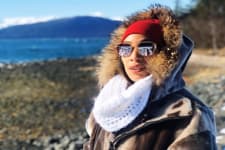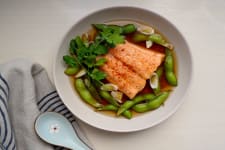
Do You Have a Taste for Adventure, Too?
April 24th, 2025How the Last Frontier Shaped Grandpa Kallenberg Into a Visionary Leader
“Earth Month.” Truth be told, the term feels somewhat jarring to me because here at Wild Alaskan Company every month is Earth Month, every day Earth Day, and every single moment of our whole existence an opportunity to love, nurture and honor our magnificent earth. To us, the celebration of our earth, its waters and all the creatures who dwell upon it, is not just a blip on the calendar, but an ethos that lives inside our bones.
And it has been so for generations.
Which is why for the next several weeks, I thought it would be poignant to celebrate the contributions made to sustainability from three generations of Kallenbergs, a fishing family through and through — but one whose keenness for the harvest of sockeye salmon forever ran, and still does, in tandem with the protection of sockeye salmon. From Grandpa Kallenberg; to his son, my late and beloved father-in-law Walt; to my husband Arron (WAC founder + CEO) — each generation has faced its own unique challenges and growth opportunities in the face of conservation and sustainability. But ultimately, the common thread that runs through their individual stories is the certainty that protecting wild salmon is a fundamental way to protect the whole ecosystem of their cherished Bristol Bay.
Robert C. Kallenberg: A Leader in the Last Frontier
There’s no better way to say it: Robert (Bob) Kallenberg — Grandpa Kallenberg — was a straight-up visionary leader. A man whose interest in salmon fishing quickly transformed into a burning desire to not only protect the fish at all costs, but to teach the methods of its conservation to everyone he could reach. His life would take him far into uncharted territory, into the last frontier where his work as an advocate and educator would help to shape a fishing industry that is now considered the gold standard of sustainability.
Born in Manhattan in 1903, Bob was more interested in animals and the great outdoors than he was urban living. He left the East Coast to study animal husbandry at Iowa State University. Then, as a young man fresh out of college in 1926, his taste for adventure led him to Kulukak, Alaska, a native village on the northern shore of Bristol Bay. A year later, he moved from Kulukak to Dillingham, Alaska, where he took up summer work as a commercial fisherman. He would spend the better part of his adult life living in the Bristol Bay region and harvesting the wild salmon that returned home each summer.
Fishing is dangerous work today, but as you can imagine, it was especially perilous work in the wooden sailboat days of Bristol Bay. As dangerous as it was for the fishermen, a larger threat was looming over the entire industry and ecosystem. As the fishery scaled and the industry became more and more efficient at extracting fish from the sea, it became clear to Bob and many others in Alaska that implementing proper conservation reform was necessary both to protect the fish and the industry itself.
In the second half of his life, he devoted himself to effecting positive change in the land and sea that he loved so dearly. Through decades of community building, organized labor movements, and policy making, the people of Bristol Bay successfully advocated for a sustainable future for the fish — helping to usher in the wild fisheries management system that we know today. For Bob's part, he had grown into a conservation-minded community leader and advocate for resident fishermen, serving with courage across a formidable roster of committees and boards — even as the chairman of Alaska’s Territorial Board of Fisheries on the Advisory Committee of the US section of the International North Pacific Fisheries Commission (INPFC).
Bob embraced growth as both a teacher and conservationist, entering into a graduate program at Cornell University when he was nearly 50 years old. There, he wrote his master’s thesis, A Study of the Red Salmon of Bristol Bay with Particular Reference to Teaching its Conservation. The intent of this study was to create a resource for other Alaskan teachers to share with their schools and student body, to cultivate a new generation of conservationists within the Alaskan fishing community. I highly encourage you to read through at least the preface of his thesis, which will give you a fuller sense of his incredible vision.
Today, Bristol Bay is home to the largest sockeye salmon run in the world, and the Bristol Bay watershed is a robust and thriving ecosystem — thanks to a lifetime of work from Bob Kallenberg and many other dedicated individuals across Alaska. His decision to set roots in the last frontier, to teach, to fish, to organize, to lead, and to learn — each turn of his life helped to set a course for subsequent generations of Kallenbergs to continue an Alaskan legacy of sustainable fishing.
I share Bob’s life story with you not simply as a celebration of Grandpa Kallenberg, but as a testament to the power we each have as an inhabitant of this planet to imagine a better future. In the coming weeks, I look forward to telling more about how Grandpa Kallenberg’s path laid the foundation for the work of his son Walt and his grandson, Arron, who have extended this incredible Alaskan legacy.
Live Wild,
Monica
Pictured above: A black & white photo from the Kallenberg family archives, with Grandpa Kallenberg standing next to the Polly K, a thirty-two-foot cedar hulled power gillnetter that he named after his wife, Mary Elizabeth “Polly” Bruyere.





